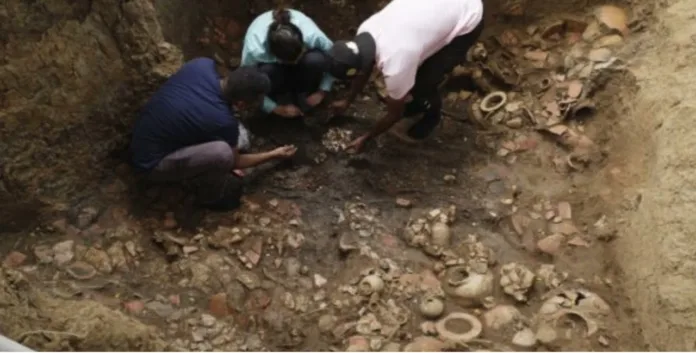A 1,200-year-old tomb brimming with treasures and chilling sacrificial remains discovered in Panama
In an extraordinary revelation that has captivated historians and archaeologists alike, a tomb dating back to 750 AD has been unearthed in the El Caño Archaeological Park, located in the Coclé Province of Panama. This ancient burial site, first stumbled upon by American explorer Hyatt Verrill in 1925, has now yielded what experts are calling a groundbreaking find: a grave intended for a distinguished Coclé leader of his time, alongside mummified bodies believed to have been sacrificed in his honour.
The Panamanian Ministry of Culture unveiled this remarkable discovery on March 1, highlighting the tomb’s invaluable contents, which encompass a dazzling array of golden artefacts and ceremonial items. Among the treasures unearthed were five golden pectorals, two gold bead belts, four bracelets, various earrings with intricate designs including human figures and a double crocodile, a necklace of small circular beads, five sperm whale tooth earrings, gold plates, two bells, bone flutes, and hundreds of ceramic objects.
Dr. Julia Mayo, the director of the El Caño Foundation, shared with HeritageDaily that the sacrificial remains found within the tomb ranged from eight to 32 individuals, all believed to have been offered up to accompany the lord into the afterlife. This practice underscores the Coclé culture’s tradition of not wanting their elites to enter the afterlife alone, a sentiment deeply embedded within their burial customs.
The primary occupant of the tomb, an elite male estimated to be in his 30s, was laid to rest in a unique face-down position atop the remains of a woman—a gesture pointing towards a specific ritual or tradition of the Coclé society. The positioning and assembly of these remains not only provide a glimpse into the societal norms and practices of the time but also indicate the high status of the individuals buried within.
While the trove of artifacts and the nature of the burials have left many in awe, Dr Mayo hinted that this could just be the beginning, as the excavation of the burial site is ongoing. The possibility of uncovering even more artefacts and understanding further the extent of sacrificial practices in this ancient society remains a thrilling prospect for those involved in the dig.
This discovery not only sheds light on the rich and complex culture of the Coclé people, who flourished in Panama from 200 BCE to 1550 CE, but also opens new doors to understanding the rituals, beliefs, and hierarchies that governed their world. As the excavation continues, the world watches eagerly, awaiting the next chapter in this fascinating glimpse into our collective past.
